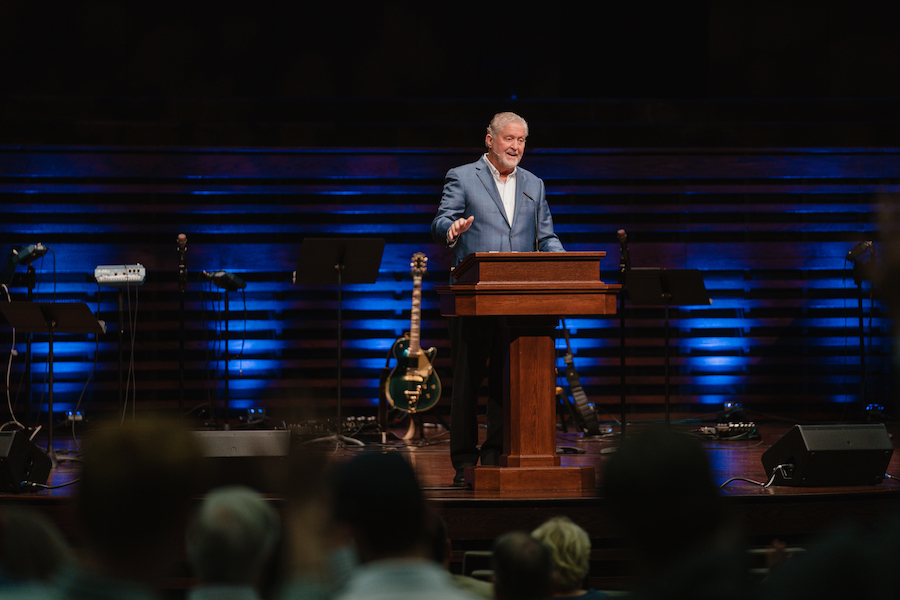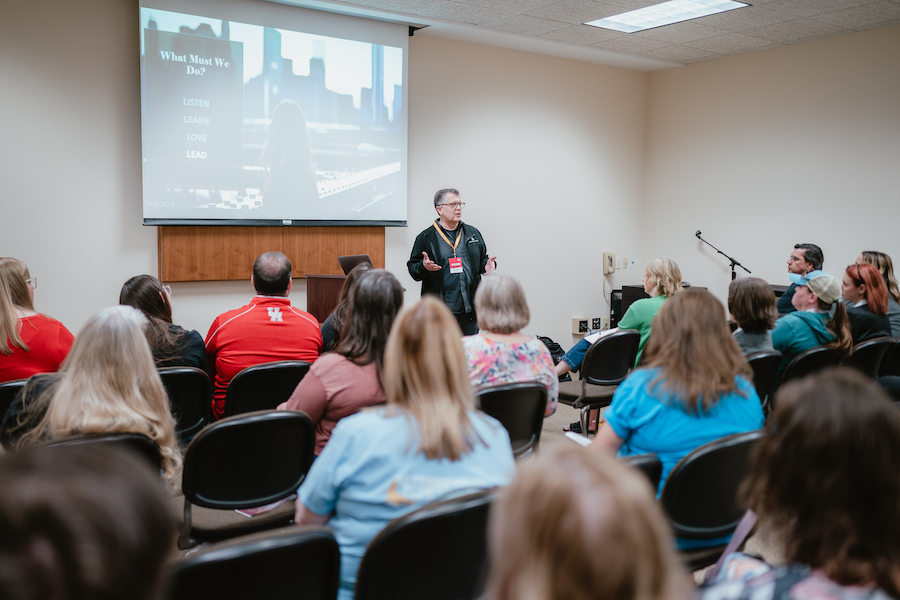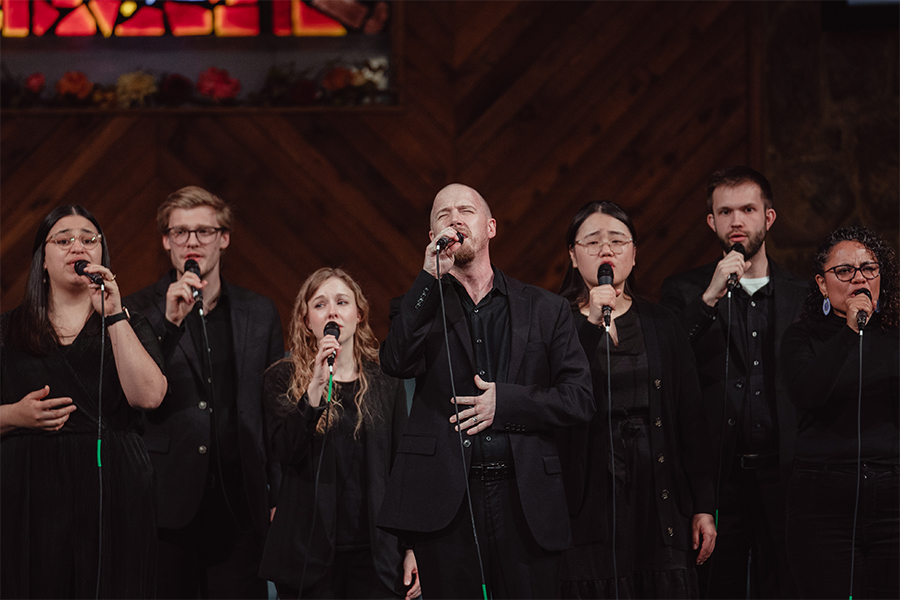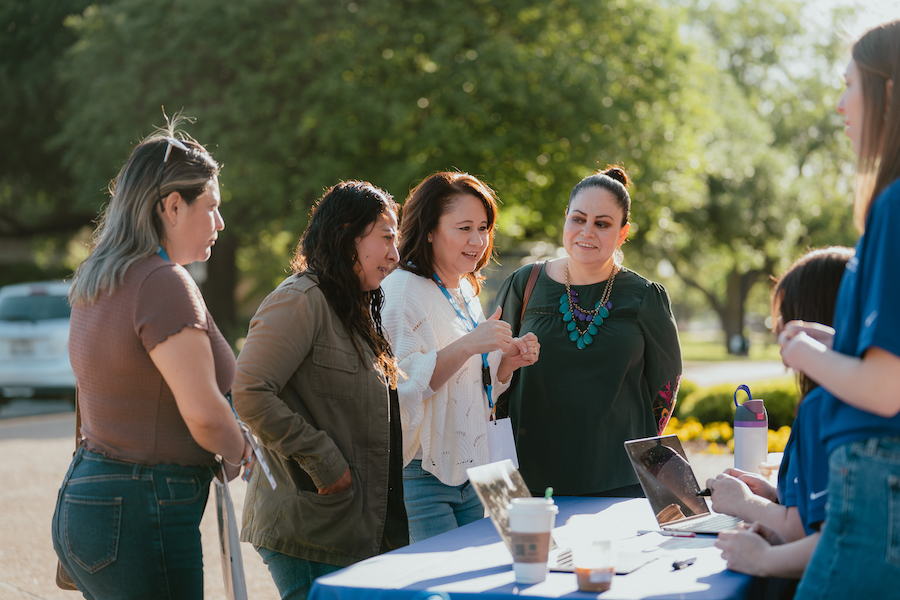SWBTS Legacy: Floy Barnard
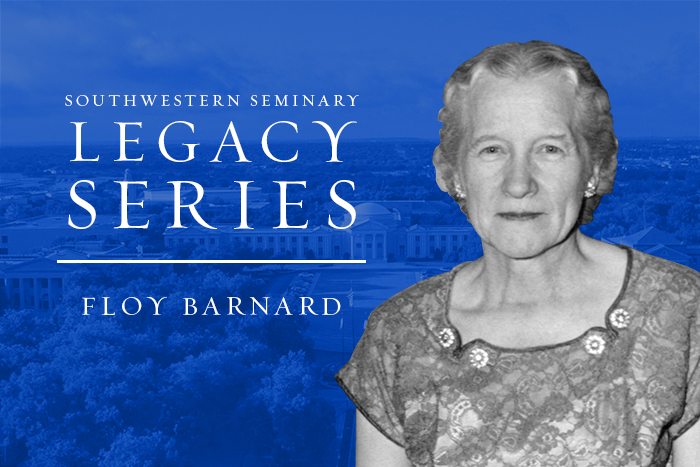

As an inquisitive and thoughtful teenager, Floy Barnard knew she had been called to educational ministry. For nearly three decades, this remarkably bright young woman made her light shine at Southwestern Baptist Theological Seminary in service to young women seeking to study God’s Word. Standing for 104 years, Barnard Hall remains a tribute to her service.
Florence M. “Floy” Barnard was born July 8, 1895, in Dawkins Pueblo, Colo., to Jehu Kimbo Barnard and Mary Ann Barnard. An alumna of Colorado College of Education with Bachelor of Arts and Master of Arts degrees, she graduated twice from Southwestern Seminary, first with a Master of Religious Education in 1929 and then with a Doctor of Religious Education in 1939. While a seminary student, she served several churches in Fort Worth as an educational director. In 1957, the University of Mary Hardin-Baylor in Belton awarded her the honorary Doctor of Literature degree. She served as a trustee at Mary Hardin-Baylor from 1957-60.
But Barnard was more than just a string of scholastic titles and degrees earned. Throughout her career, the selfless educator willingly shared her talents, time, and knowledge, taking young female seminary students under her wing to guide them to their own academic successes, and endearing herself to them and to the seminary in the process.
Barnard joined the Southwestern Seminary faculty in 1933 during the heart of the Great Depression to teach missionary education and educational arts in the department of religious education. Though the seminary, hit hard by the stock market crash, had begun slashing faculty salaries in half in 1929, Barnard was among the faithful who remained on staff during those difficult years.
Diversity in course offerings was essential then because of the reduction in the number of teachers employed. To help meet the needs of students, Barnard combined and taught an array of courses. She also developed courses in religious dramatics, a discipline that would hold a major place in future curriculum development. Later, she served as a committee member of the Southern Baptist Convention’s Film Commission.
While at Southwestern Seminary, Barnard was a popular conference leader and speaker throughout the SBC. Beginning in 1935, she spoke annually at the Ridgecrest and Glorieta Baptist conference centers and was active in the SBC’s Woman’s Missionary Union.
Coming out of the Depression, the seminary hummed with a new sense of missionary zeal and an influx of willing students. Barnard remained on the faculty, but her most distinctive contribution to Southwestern Seminary was her contact and influence with hundreds of young women who arrived on campus. She intensified that service as dean of women, beginning with her election to that position in 1942 and continuing until her retirement 18 years later.
As director of the women’s dormitory, Barnard served as counselor, friend, house mother, and confidant to the young women under her guidance. Her influence was so great that trustees named the women’s dormitory Floy Barnard Hall in 1960 “because of her gracious spirit and total dedication that had so endeared her” to the seminary and its women.
“The girls have contributed to me more than I ever have to them,” Barnard wrote. “I would say that positively they are the most wonderful girls in the world.”
During President Robert E. Naylor’s administration at Southwestern Seminary, the School of Religious Education was one of four that experienced significant growth, and numerous faculty were added to meet teaching needs. It was during this period that Barnard retired after spring graduation in 1960, at age 65. Trustees moved then to name the women’s dormitory for her.
Like its namesake, Barnard Hall has a storied history, having served many purposes dating back to its construction in 1914. Southwestern Seminary had already been training both men and women since the school was established in 1908, but after the seminary’s relocation to Fort Worth in 1910, plans were made to construct a building that would house the Women’s Missionary Training School. When the building opened in 1915, it provided a space uniquely devoted to training the seminary’s female students who had answered the call to a life of ministry and service. Trustees found Floy Barnard to be a natural choice to guide these young women.
Like Floy Barnard herself, Barnard Hall served endless numbers of female students. It is still the official residence for women on the Southwestern Seminary campus and is Southwestern Seminary’s second oldest structure.
Serving tirelessly throughout her Southwestern Seminary tenure, Barnard was also known for her contribution to many areas of denominational life, leadership, and teaching. She was active in the SBC’S Woman’s Missionary Union and contributed to many written works, including Sunday School lessons for the Baptist Sunday School Board.
She authored two books—Drama in the Churches and Christian Witnessing—and four Bible study books. While she was an inspirational speaker at many conventions worldwide, she continued to say that she found her greatest joy in serving at Southwestern Seminary. In 1967, Barnard was one of three recipients of Southwestern Seminary’s Distinguished Alumni award.
After her retirement, Barnard continued to teach the Word of God. She led conferences at mission field meetings in Argentina, Brazil, Chile, Mexico, and Guatemala until her death in 1992, in Sunnyvale, Calif.
